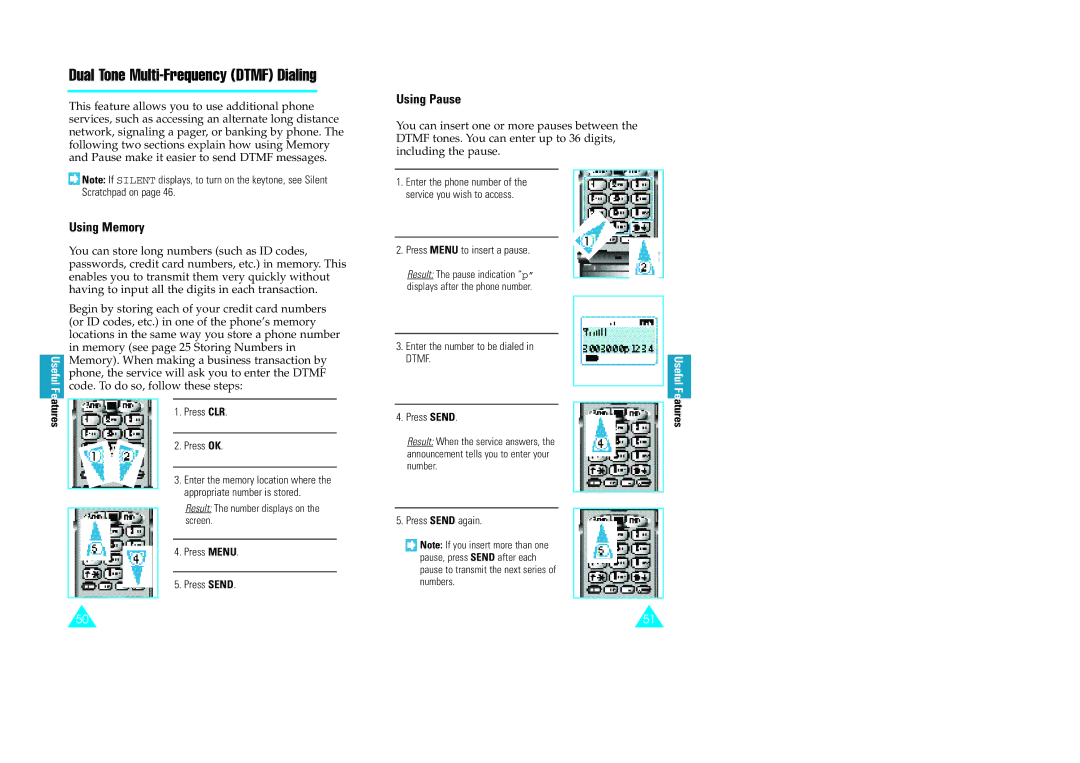
Dual Tone Multi-Frequency (DTMF) Dialing
This feature allows you to use additional phone services, such as accessing an alternate long distance network, signaling a pager, or banking by phone. The following two sections explain how using Memory and Pause make it easier to send DTMF messages.
![]() Note: If SILENT displays, to turn on the keytone, see Silent Scratchpad on page 46.
Note: If SILENT displays, to turn on the keytone, see Silent Scratchpad on page 46.
Using Memory
You can store long numbers (such as ID codes, passwords, credit card numbers, etc.) in memory. This enables you to transmit them very quickly without having to input all the digits in each transaction.
|
| Begin by storing each of your credit card numbers | ||||
|
| (or ID codes, etc.) in one of the phone’s memory | ||||
|
| locations in the same way you store a phone number | ||||
|
| in memory (see page 25 Storing Numbers in | ||||
Useful |
| Memory). When making a business transaction by | ||||
| phone, the service will ask you to enter the DTMF | |||||
|
| |||||
Fe |
| code. To do so, follow these steps: | ||||
|
|
|
|
|
| |
atures |
| 1. | Press CLR. | |||
|
|
| ||||
|
|
|
|
|
|
|
|
|
| 2. | Press OK. | ||
|
|
|
|
|
|
|
|
|
| 3. | Enter the memory location where the | ||
|
|
|
|
| appropriate number is stored. | |
|
|
|
|
| ||
|
|
|
|
| Result: The number displays on the | |
|
|
|
|
| ||
|
|
|
|
| screen. | |
|
|
|
|
|
|
|
|
|
| 4. | Press MENU. | ||
|
|
|
|
|
|
|
|
|
| 5. | Press SEND. | ||
|
|
|
|
|
|
|
Using Pause
You can insert one or more pauses between the DTMF tones. You can enter up to 36 digits, including the pause.
1.Enter the phone number of the service you wish to access.
2.Press MENU to insert a pause.
Result: The pause indication “p” displays after the phone number.
3.Enter the number to be dialed in DTMF.
4.Press SEND.
Result: When the service answers, the announcement tells you to enter your number.
5.Press SEND again.
![]() Note: If you insert more than one pause, press SEND after each pause to transmit the next series of numbers.
Note: If you insert more than one pause, press SEND after each pause to transmit the next series of numbers.
Useful Features
50 | 51 |
